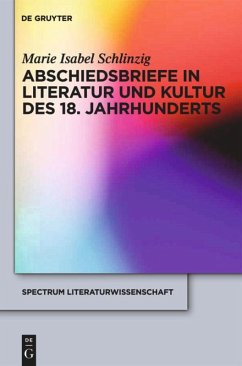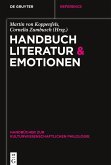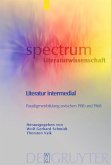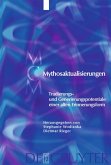This study focuses on the significance and functions of last letters written before death in the literature and culture of the eighteenth century. Last letters are understood in the study as an epistolary sub-genre with a shared theme and distinctive features which are shaped by culture-specific rituals of dying and which are subject to historical change. By drawing on epistolary theory, the analysis shows that last letters in the period were characterized by particular conventions, functions, and modes of reception, which were not codified but established and transmitted through usage and public or private discourse, primarily with the help of examples. Based on close readings of literary texts and published historical letters written in German, English, and French, it is argued that there were two predominant trends in the usage of fictional and real last letters. On the one hand, given the special authority attributed to the words of the dying, last letters were written to conform to contemporary ideals of a â??good deathâ?? and then used as examples for the edification, education, and consolation of their readers. In contrast, other authors, suicides in particular, used the protection death and the written medium afforded them to communicate freely and in a consciously nonconformist manner. They revealed intimate secrets, tried to legitimate their actions, or expressed unconventional beliefs. In real life and fiction, last letters served the dying as a means of shaping posteriorityâ??s reaction, and retaining control of their bodies or corpses.
"Sieh wir träumen, wenn wir vom Tode reden", meint Werther, während er sich im Abschiedsbrief an Lotte auf sein Sterben vorbereitet. Wie vorliegende Studie zeigt, folgt er dabei einer Tradition letzten Schreibens, die im 18. Jahrhundert moderne Gestalt anzunehmen beginnt. Dieser Band untersucht erstmals eingehend und anhand zahlreicher Quellen, welch komplexe Rolle Abschiedsbriefe Sterbender in Literatur und Kultur der Zeit spielen.
Manche Autoren nutzen letzte Botschaften, um das (eigene) Sterben exemplarisch zu gestalten. Ihre Briefe wirken normativ, dienen der Erbauung, Anleitung oder Unterhaltung. Speziell Frauen und Selbstmörder schreiben, um Nonkonformes zu äußern: Sie enthüllen Geheimnisse oder rechtfertigen sich. Ihre Briefe beleuchten Veränderungsprozesse, etwa in Einstellungen zu Tod, Suizid und Subjekt.
Insgesamt bilden Abschiedsbriefe eine Briefsorte, die von kulturell tradierten Konventionen zusammengehalten wird. Sie zielt auf Gemeinschaft und erlaubt es dem Sterbenden, sich ein letztes Mal selbst darzustellen. Deutlich wird dies, wie diese Studie darlegt, u.a. im Werk von Elizabeth Singer Rowe, Richardson, Rousseau, Schiller, Sophie von La Roche und Goethe.
Die vorliegende Studie wendet sich an Literaturwissenschaftler, Kulturhistoriker und Medienwissenschaftler und an jeden, der sich für Literatur- und Kulturgeschichte, Briefkultur sowie, im weiteren Sinne, Abschied, Tod und Sterben interessiert.
"Sieh wir träumen, wenn wir vom Tode reden", meint Werther, während er sich im Abschiedsbrief an Lotte auf sein Sterben vorbereitet. Wie vorliegende Studie zeigt, folgt er dabei einer Tradition letzten Schreibens, die im 18. Jahrhundert moderne Gestalt anzunehmen beginnt. Dieser Band untersucht erstmals eingehend und anhand zahlreicher Quellen, welch komplexe Rolle Abschiedsbriefe Sterbender in Literatur und Kultur der Zeit spielen.
Manche Autoren nutzen letzte Botschaften, um das (eigene) Sterben exemplarisch zu gestalten. Ihre Briefe wirken normativ, dienen der Erbauung, Anleitung oder Unterhaltung. Speziell Frauen und Selbstmörder schreiben, um Nonkonformes zu äußern: Sie enthüllen Geheimnisse oder rechtfertigen sich. Ihre Briefe beleuchten Veränderungsprozesse, etwa in Einstellungen zu Tod, Suizid und Subjekt.
Insgesamt bilden Abschiedsbriefe eine Briefsorte, die von kulturell tradierten Konventionen zusammengehalten wird. Sie zielt auf Gemeinschaft und erlaubt es dem Sterbenden, sich ein letztes Mal selbst darzustellen. Deutlich wird dies, wie diese Studie darlegt, u.a. im Werk von Elizabeth Singer Rowe, Richardson, Rousseau, Schiller, Sophie von La Roche und Goethe.
Die vorliegende Studie wendet sich an Literaturwissenschaftler, Kulturhistoriker und Medienwissenschaftler und an jeden, der sich für Literatur- und Kulturgeschichte, Briefkultur sowie, im weiteren Sinne, Abschied, Tod und Sterben interessiert.








